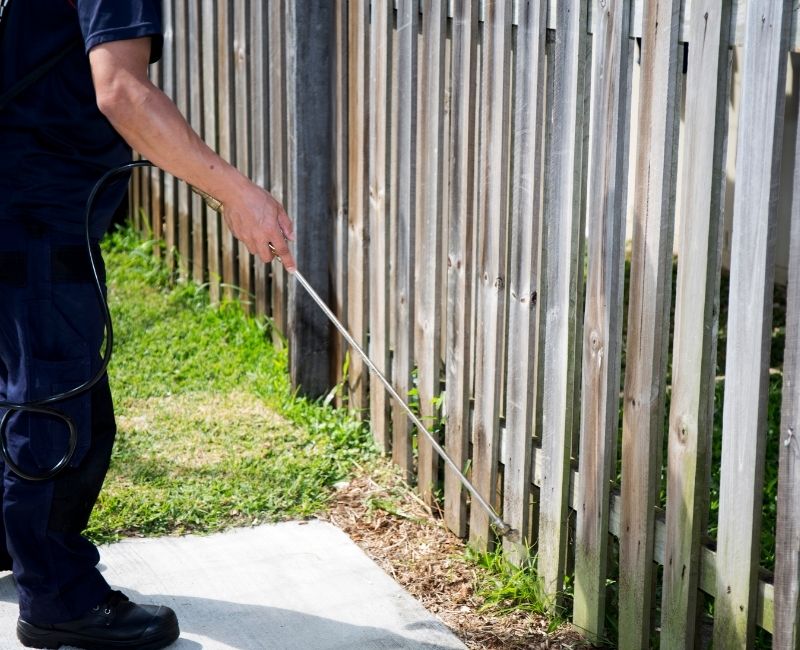Ants – Identification, Behaviour, and Treatment
Ant infestations are a common problem across the Central Coast, especially during the warmer months. These insects can appear suddenly in kitchens, bathrooms, and outdoor areas—often in large numbers.
What starts as a few scouts can quickly turn into a full trail, with ants following established scent paths to food and water sources. Many homeowners try to treat them with supermarket sprays, only to find the ants return days later. That’s because the visible ants are only a small part of a much larger colony hidden in walls, soil, or garden beds.
Effective ant control depends on identifying the species and using the right treatment to target the entire colony—not just the surface activity.
Enquire Now
Common Ant Species on the Central Coast
Are you having issues with ants? There are a lot of different species here on the Central Coast. The main three which most households would have experienced are:
- Coastal Brown Ants
- Black House Ants
- White Footed Black Ants
Ants have different diets, and selecting the right treatment depends on the species. They are generally divided into two groups: Sugar Feeding Ants and Protein Feeding Ants.
A lot of the products on supermarket shelves have little to no effect on many of these species.
These tiny insects can invade homes and gardens, causing frustration for residents. Understanding their habits and knowing how to manage them can help keep your property ant-free.
Identifying Ant Species
Ants on the Central Coast vary widely, each species having unique traits. Common types include the black ant and the coastal brown ant. Identifying the species is crucial as it influences the control methods used. Observing their behaviour and nesting sites can help determine the species, aiding in effective management.

Sugar vs. Protein Feeding Ants
Effective ant control starts with understanding what the ants are feeding on. Most species fall into two main dietary categories: sugar feeders and protein feeders.
For treatment to work, it needs to match the ants’ dietary preference. Coastwide Pest Control identifies the species first, then selects a targeted bait—whether sugar-based or protein-based—to ensure the colony takes it back to the nest.
Using the wrong bait—like a sugar gel on a protein trail—won’t affect the colony and can cause it to relocate and spread. This is a common issue when using supermarket products, which typically only kill surface ants without reaching the nest.

Ant Behaviour and Nesting Habits
Ants are highly organised, colony-based insects. Each colony can house thousands of workers, all performing specific roles—scouting, foraging, and maintaining the nest. Once a food source is found, ants lay down pheromone trails to guide others directly to it, forming the visible trails seen around homes.
On the Central Coast, ants build nests in a range of locations depending on the species. These include:
- Wall cavities and roof voids
- Under pavers, driveways, and garden beds
- Behind retaining walls
- Inside tree stumps and hollow logs
- Beneath kitchen or bathroom flooring
Nests are often well hidden and can be difficult to locate without experience. Some species form multiple nests, making treatment more complex. Surface spraying rarely reaches these areas, which is why identifying nesting behaviour is key to eliminating the problem long-term.
Preventative Measures
Preventing ants from entering your home starts with removing the conditions that attract them. These simple steps can help reduce the risk of infestation:


How to Prepare for Flea Treatment
The longer an infestation is left untreated, the more difficult it becomes to manage. Colonies grow rapidly, and some species split and relocate when threatened, making DIY treatment even less effective.
Signs of an Ant Infestation
Preventing ants from entering your home starts with removing the conditions that attract them. These simple steps can help reduce the risk of infestation:

Treatment Options for Ants
Ant infestations often persist because the wrong products are used, or the treatment doesn’t reach the source colony. Sprays from hardware stores may kill visible ants, but they rarely eliminate the nest—leading to re-infestation within days.

Effective Ant Control Involves
- Targeted baiting using the correct bait type (sugar or protein) based on species and feeding habits.
- Non-repellent treatments that ants unknowingly carry back to the colony, spreading the product through the nest.
- Locating and treating nests, especially in wall cavities, gardens, or outdoor structures.
- Applying long-lasting barrier treatments around entry points and likely ant pathways.
Because each species behaves differently, treatment isn’t one-size-fits-all. The best results come from identifying the species first, then applying the right product in the right place.
Booking a professional pest inspection with Coastwide Pest Control ensures the problem is assessed properly and treated with a tailored approach. Our team is experienced with local ant species and uses proven methods to resolve infestations at the source—not just on the surface.
Need Professional Ant Control?
If ants keep returning no matter what you try, it’s time for a professional solution. Coastwide Pest Control offers expert ant inspections and targeted treatments tailored to the species and extent of the infestation.
Book your inspection today and let us take care of the problem—properly.

